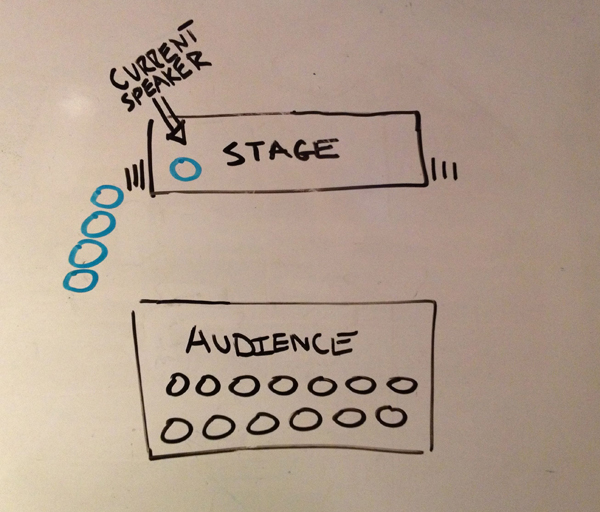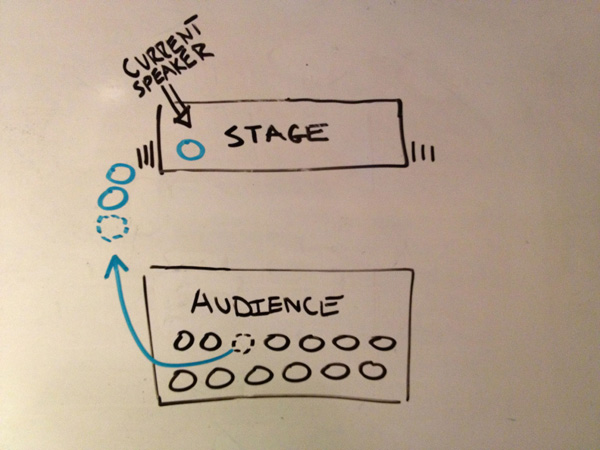99 second presentations
A running joke in the world of presentations is: how short can they be? They used to be an hour. Then TED went to 20 minutes, Pecha Kucha to 6, and Ignite to 5. The trend of short presentations has been on the rise for years and one wonders where it will stop.
But then consider TV advertisements: they’re 30 seconds long. The good ones communicate many ideas well in a very short amount of time.
Years ago I ran an event at Microsoft called Design Day. Each year we’d experiment with different formats and one year we tried 99 second presentations. It went well and we did it the next year too. Unlike most speaking events it gives the audience a real chance to participate.

How it works:
- There’s a stage and a microphone
- You hand pick 5 or 6 speakers to be in line by the wall
- The first speaker gets 99 seconds to speak (they can have a single slide if they want)
- When they’re done, they hand the microphone to the next speaker
- Anyone in the audience can get in line: either to speak on a new topic, or to respond to something they heard.
- Speakers can speak more than once
- When you run out of time, or speakers, the session ends

What happens:
Before the session starts, explain how it works. Make sure the audience knows they can get in line and get a turn.
At first everyone is nervous, but paying attention. How does this work? they wonder. The format itself creates drama, which is good. If you choose good speakers to start the line, and invite them to speak about provocative or important topics, soon someone in the audience will stand up. When this happens, everyone starts listening differently, realizing they too can can get in line.
On finding and coaching speakers
It’s a small commitment to get someone to speak for less than 2 minutes. They can practice their material 10 times in half an hour. The surprise of short format speaking is it forces speakers to get to the good stuff. One year we let the hand picked speakers have a single slide if they wanted. This adds to your logistics, but if they want to give the audience a URL or twitter handle, having it on a slide makes this easier.
Speakers who volunteer can and will use less than 99 seconds, since they won’t have prepared. This is good. You’ll be impressed by the different, clever ways people choose to use their time.
Logistics
You need to have:
- A hand held microphone
- A gong or buzzer to cut people off when they hit 99 seconds (you have to be militant about this). A warning sound at 80 seconds is wise.
- 5 or 10 invited speakers to be the first to go and help set the tone you want. Choose good, provocative speakers that will inspire responses. If you want to play it safe, have a large number of people in the original line. If the session is going to be 30 minutes long, plan for 20 minutes of hand picked speakers. Then even if you fail to get volunteers, worst case you’ll just end 10 minutes early.
- Plant a seed in the audience for someone you know will get in line after things start to break the ice.
- A time limit for when the session ends.
- Afterwards write up a blog post listing all the people who spoke and their contact info – helps people follow up and make connections.
